#printingtechniques
Text
From Concept to Shelf: The Journey of Packaging Label Printing
Packaging label printing is a crucial aspect of the packaging industry, playing a pivotal role in conveying vital information, ensuring brand recognition, and enticing consumers to make a purchase. This article explores the fascinating journey of packaging label printing, from the initial concept to the moment a product sits proudly on the store shelf.

Understanding the Significance of Packaging Label Printing
1. The First Point of Contact
Packaging labels are often the first point of contact between a consumer and a product. They provide essential information about the product, its ingredients, usage instructions, and branding. An attractive and informative label can create a positive impression and influence purchasing decisions.
Example: Consider a bottle of premium olive oil. The elegant label not only displays the product's quality but also provides details about its origin, flavor notes, and usage recommendations, all of which influence the consumer's decision.
2. Branding and Identity
Packaging labels are a powerful tool for establishing and reinforcing a brand's identity. The design, colors, typography, and overall aesthetics of a label are carefully chosen to align with the brand's image and values. Consistency in labeling across a product line helps build brand recognition.
Transparent Label Manufacturer: Brands looking for a modern, sleek, and minimalistic label design often collaborate with a Transparent Label Manufacturer. These labels provide a clear and clean look, allowing the product to be the focal point.
The Process of Packaging Label Printing
The journey of packaging label printing involves several intricate steps, each contributing to the creation of a label that communicates effectively and appeals to the target audience.
1. Design and Conceptualization
The process begins with the design and conceptualization phase. Designers and brand owners work together to create a label that encapsulates the product's essence. This includes choosing the right colors, fonts, imagery, and layout. The label must be visually appealing while conveying essential information clearly.
2. Material Selection
Once the design is finalized, the next step is material selection. The choice of label material is essential, as it affects the label's appearance and durability. Options include paper, plastic, or even special materials like foil for a premium look. The choice also depends on the product's environment and usage conditions.
3. Printing Techniques
Packaging label printing involves several printing techniques, with the most common ones being:
Offset Printing: Ideal for high-quality images and colors, often used for intricate label designs.
Flexographic Printing: Suitable for large production runs and labels with simple designs.
Digital Printing: Offers flexibility, allowing for on-demand printing and variable data.
The selection of the printing technique depends on the label's design, quantity, and budget considerations.
Example: A boutique chocolate manufacturer may opt for offset printing to showcase the intricate details of their label design, which features hand-painted chocolate pieces.
4. Color Management
Accurate color management is crucial to ensure consistency across different label printing runs. Color profiles are established to ensure that the label's colors match the approved design, whether it's a vibrant red for a soft drink or a muted pastel for a skincare product.
5. Die-Cutting and Finishing
After the labels are printed, the next step is die-cutting. This process shapes the label into its final form, whether it's a simple rectangle or a custom shape that complements the product's packaging. Labels may also undergo additional finishing processes such as embossing, laminating, or varnishing for added visual and tactile appeal.
6. Quality Control
Quality control is a critical part of the process. Labels are inspected for color accuracy, consistency, and defects. This step ensures that labels meet the highest standards of quality and aesthetics.
7. Application to Packaging
Once the labels are approved and quality-checked, they are applied to the product's packaging. This can be done manually for small batches or automatically for large production runs.
Example: A local artisan jam maker may apply labels to each jar of jam by hand, emphasizing the handmade and personal touch of their products.
The Importance of Compliance and Information
In addition to aesthetics and branding, packaging label printing must comply with various regulations and provide essential product information. This includes:
Ingredients: Clearly listing all ingredients used in the product, particularly important for allergen information.
Nutrition Facts: Providing accurate nutrition information, including calories, fats, proteins, and more.
Barcodes: Adding barcodes for inventory and sales tracking.
Safety Warnings: Including safety warnings, usage instructions, and any relevant legal information.
Sustainability and Environmental Considerations
In recent years, there has been a growing emphasis on sustainable packaging label printing. Many brands are opting for eco-friendly label materials, inks, and printing processes. This shift aligns with the broader goal of reducing the environmental footprint of the packaging industry.
Conclusion
The journey of packaging label printing is a meticulously planned process that combines aesthetics, information, and compliance. From concept to shelf, packaging labels serve as the bridge between brands and consumers. They convey a product's identity, entice potential buyers, and provide essential information. As the packaging industry continues to evolve, so too does the art and science of label printing, adapting to changing consumer preferences, environmental considerations, and the ever-increasing demand for creative and informative labeling.
Credits : https://letragraphix.blogspot.com/2023/10/Packaging%20Label%20Printing.html
#PackagingLabels#LabelPrinting#Branding#Design#MaterialSelection#PrintingTechniques#ColorManagement#Compliance#Sustainability#ConsumerInformation#ProductIdentity
0 notes
Text

Explore the world of screen printing and unleash your creativity with this comprehensive guide on different types of screen printing techniques! Get inspired and elevate your printing game today!
0 notes
Text
Transform your space into a festive wonderland with our exquisite Block Printed Dhurries. 🌟 These beautifully crafted pieces add charm and elegance to any room, setting the perfect festive vibe. Elevate your home decor this season! ✨
#ARIANA#supportartisans#heritageart#blockprinting#art#ageoldart#jaipur#rajasthan#blockprintingonfabric#printing#printingart#traditionalart#traditionalprinting#printingtechnique#HomeDecor#FestiveVibes#blockprinteddhurries
0 notes
Photo

Я был удивлен, узнав, что обложки напечатаны необычным способом. Я не знаю, как называется этот метод печати, но выглядит он великолепно. Тетради переливаются на свету, хотя минус в том, что изображение стало темным и шумным. #PrintingMethod #ShimmeringLight #DarkAndNoisy #PrintingTechnique #Designer #GraphicDesign #PrintDesign #Illustration #PrintingInnovation #PrintingTrends #PrintingServices #PrintingIndustry #PrintingTechnology #PrintingDesigner #PrintingBusiness #PrintingTips #PrintingInspiration #PrintingArt #PrintingLife https://www.instagram.com/p/CnXca7fKSDY/?igshid=NGJjMDIxMWI=
#printingmethod#shimmeringlight#darkandnoisy#printingtechnique#designer#graphicdesign#printdesign#illustration#printinginnovation#printingtrends#printingservices#printingindustry#printingtechnology#printingdesigner#printingbusiness#printingtips#printinginspiration#printingart#printinglife
0 notes
Link
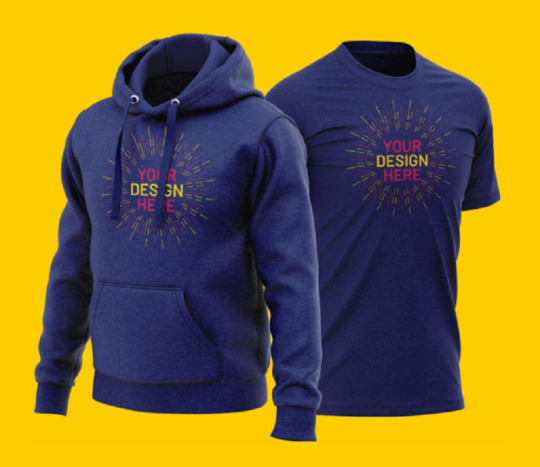
0 notes
Text
research
Although generally associated with the United States, Pop Art found an early voice in Britain as a critical and ironic reflection on the post-War consumer culture of the late 1950s.
In 1952 Britain, in fact, a group of artists, writers, and critics which would come to be known as ‘Independent Group’ – or simply ‘IG’ – began to meet regularly, driven by a common perception of a gap between the art and life of the time to discuss new theories and methods to incorporate in the artistic practice those aspects of visual culture that weren’t traditionally part of it but that had inevitably become elements of the everyday life, from product packaging to cinema celebrities.
The group’s collective exhibition This Is Tomorrow, held at the Whitechapel Gallery in London in 1956, served as the key starting point for Pop Art, providing an unprecedented example of integration between art and modern life.
It was English Pop Artist Richard Hamilton who, in 1957, listed the characteristics of Pop Art, “Pop Art is: Popular (designed for a mass audience), Transient (short-term solution), Expendable (easily forgotten), Low cost, Mass produced, Young (aimed at youth), Witty, Sexy, Gimmicky, Glamorous, Big business.”
Pop Art, made of the aesthetic of the banal his signature, mirroring the times of mass-production and quick, banal entertainment, while also investigating the commodification of fame. Everyday objects like Campbell’s soup cans and pop culture celebrities like Marilyn Monroe were transformed into art and became icons of the movement.
The elements of multiplicity and reproduction – typical of mass-production culture – also reflected in artistic media and processes: while acrylic paints allowed artists to create vivid, flat surfaces, the screen-printingtechnique produced boldly coloured images as repeated patterns subverting the idea of painting as a medium of originality.
0 notes
Photo

Residency opportunity for printmakers in NY Deadline: April 22, 2019 Repost for @art_hub_copenhagen OPEN CALL: SUMMERWORKS! . Do you have experience or interest in traditional printmaking techniques? And do you want to work and learn about the New York art scene? Then apply for Art Hub Copenhagen’s Summerworks Residency in collaboration with #BikubenFoundationNYC and @efa_nyc ! . For more information see link in bio. 🇩🇰🇺🇸 Deadline 22nd of April. @art_hub_copenhagen #art_hub_copenhagen #opencall #artistresidency #artincopenhagen #copenhagenartist #artinnyc #halmtorvet27 #kødbyen #opencallforartists #printscreen #printmakingstudio #airprogram #AIR #printingtechniques #printmaking #printopencall #printmakersofinstagram #residencias #artresidence #airprogram #artistsapply #artistsoninstagram #creative #handcrafted #visualarts #nyccreatives #nycprintmaking #nycarts #printshop (at New York, New York) https://www.instagram.com/p/BwR_QWeFqfJ/?utm_source=ig_tumblr_share&igshid=1f3qcm0xq57a
#bikubenfoundationnyc#art_hub_copenhagen#opencall#artistresidency#artincopenhagen#copenhagenartist#artinnyc#halmtorvet27#kødbyen#opencallforartists#printscreen#printmakingstudio#airprogram#air#printingtechniques#printmaking#printopencall#printmakersofinstagram#residencias#artresidence#artistsapply#artistsoninstagram#creative#handcrafted#visualarts#nyccreatives#nycprintmaking#nycarts#printshop
1 note
·
View note
Photo

High gloss glitter spot uv #packaging #packagingturkey #luxurypackaging #printingfinishes #glittervarnish #glitter #paperbagturkey #paperbagistanbul #printingtechniques #alyapackaging https://www.instagram.com/p/CaB7mb-s5WM/?utm_medium=tumblr
#packaging#packagingturkey#luxurypackaging#printingfinishes#glittervarnish#glitter#paperbagturkey#paperbagistanbul#printingtechniques#alyapackaging
0 notes
Photo
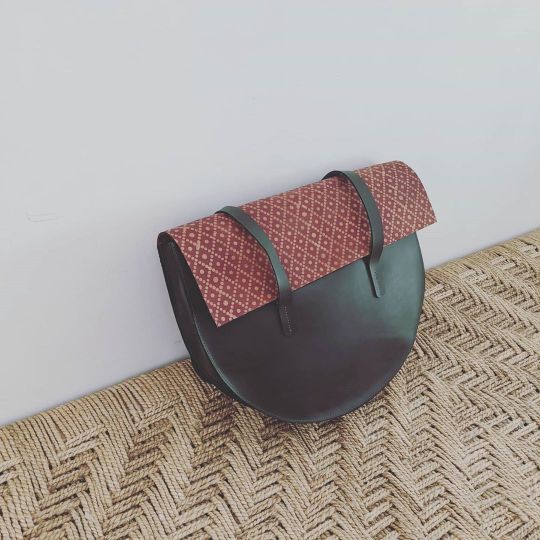
Okay we promise this is the last one from the "Resting" series ! #newtote #instashopping #instabuy #totedesign #upcycledfurniture #upcycledleatherbag #surfacedesign #dabu #printingtechniques #blockprinting #newproducts #hurryupfall #liketime #followfriday (at Artistic_Sthan) https://www.instagram.com/p/CFSN8uQppuO/?igshid=mb5cswi4dra1
#newtote#instashopping#instabuy#totedesign#upcycledfurniture#upcycledleatherbag#surfacedesign#dabu#printingtechniques#blockprinting#newproducts#hurryupfall#liketime#followfriday
0 notes
Photo
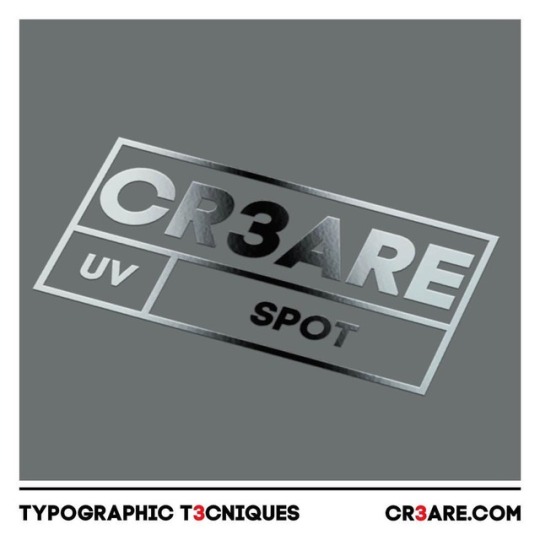
SPOT UV PRINTING - A graphic design can be enhanced through various printing techniques, including the spot uv printing. This technique is the ideal for editing the finishes and emphasizing titles, business logos, cover pages, or graphic details of any size in order to highlight some details and attract the attention of the consumer. Don't you think your printed material deserves more attention to details? Contact us for more information at www.cr3are.com ___________ Un progetto grafico si può valorizzare attraverso diverse tecniche di stampa, tra cui la VERNICIATURA UV. Questa tecnica è l'ideale per modificare le finiture ed enfatizzare titoli, marchi aziendali, fondi di copertina o dettagli grafici di qualsiasi dimensione al fine di valorizzare alcuni particolari e di attrarre l’attenzione del consumatore. Non pensate che il vostro materiale stampato meriti una maggiore attenzione ai dettagli? Contattaci per maggiori informazioni su www.cr3are.com __________ #uv #rays #spot #spotuvprinting #techniques #printing #logo #design #designer #graphic #graphics #graphicdesigner #business #company #adv #advertising #art #inspiration #printingtechniques #master #marketing #digitalmarketing (presso Cr3are)
#graphic#spot#business#adv#printingtechniques#inspiration#uv#logo#marketing#rays#art#techniques#graphics#company#digitalmarketing#designer#graphicdesigner#advertising#spotuvprinting#design#master#printing
3 notes
·
View notes
Photo
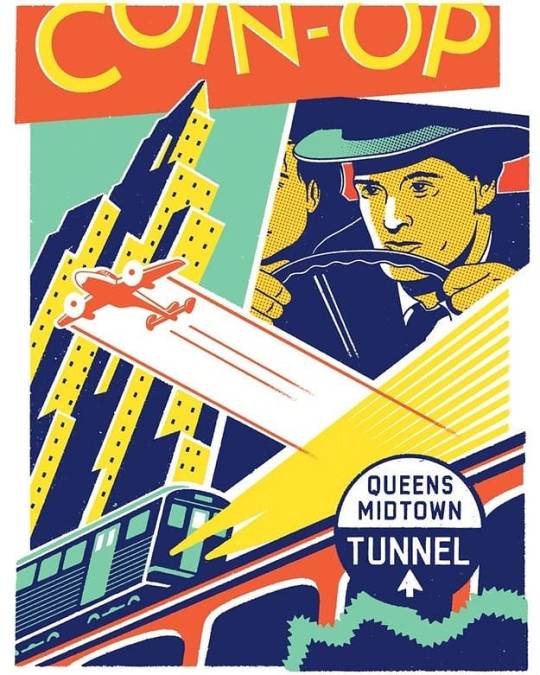
American Illustration 37 Winners PETER and MARIA HOEY @coinophoey @CoinOpBooks #representative Rapp | Art @RappArt #geraldandcullenrapp Midtown Tunnel.#Skyscrapers meet Sterling Hayden. Our 8.5x11 #silkscreen combines our love of #vintage #printingtechniques film noir and New York. This 4-color promotional #print was drawn and printed in the Spring 2017 in an edition of 125. #comics #books #animation #illustration #illustratorsoninstagram #artistoninstagram #illustrationart #ilovethiswork #awardwinningillustrator #ai37 #art #competition #illustrationartist #creative #Ilustrações #drawer #drawing #artwork #americanillustration #ilustracion #ilustrador #arte #artista https://www.instagram.com/p/BvCbTLfAV3H/?utm_source=ig_tumblr_share&igshid=1kfmiqbtoyyd7
#representative#geraldandcullenrapp#skyscrapers#silkscreen#vintage#printingtechniques#print#comics#books#animation#illustration#illustratorsoninstagram#artistoninstagram#illustrationart#ilovethiswork#awardwinningillustrator#ai37#art#competition#illustrationartist#creative#ilustrações#drawer#drawing#artwork#americanillustration#ilustracion#ilustrador#arte#artista
0 notes
Photo

Hanging the prints out to dry... . . . . . #collectprints #linedrawing #print #printmaking #printwork #graphic #monoprint #artwork #graphic #creative #monotransfer #transfer #printing #printingstudio #akuainks #worksonpaper #printingtechniques #inktober #makearteveryday #monotypeoftheday #victoriasills #printmaker #monoprinting #wip #monoprints #instaprint #instartist #passionflower (at Westcliff-on-sea Beach) https://www.instagram.com/p/BphJvstgfu5/?utm_source=ig_tumblr_share&igshid=1qhlikys4noh1
#collectprints#linedrawing#print#printmaking#printwork#graphic#monoprint#artwork#creative#monotransfer#transfer#printing#printingstudio#akuainks#worksonpaper#printingtechniques#inktober#makearteveryday#monotypeoftheday#victoriasills#printmaker#monoprinting#wip#monoprints#instaprint#instartist#passionflower
0 notes
Photo
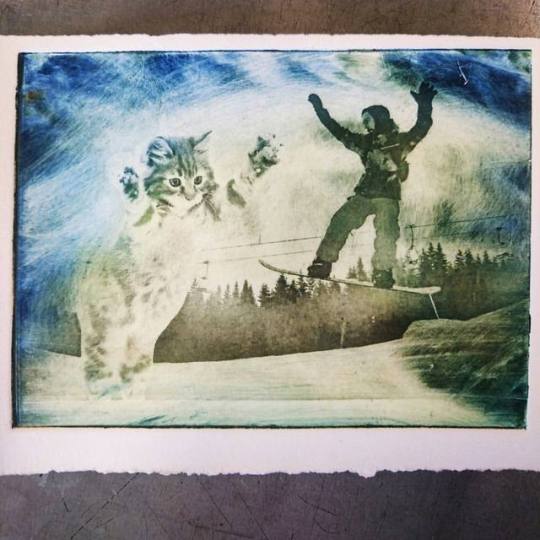
Simon houdt van poesjes, simon is 1 met de poes. De poes is simon. I wanna be a cat, miauw miauw miauw miauw. (luister naar het nummer van thundercat - A Fan's mail. je zult geen spijt hebben)
1 note
·
View note
Text
Waterless Lithography
WATERLESS LITHOGRAPH PRINT OF A CRUSTACEAN/LOBSTER USING AN EXISTING DRAWING
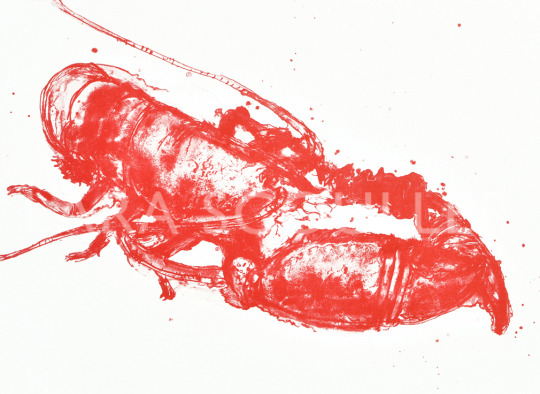
Over the last twelve months I have been getting acquainted with waterless lithography and it’s potential for giving rich results and the ability to produce strong tonal prints. I was lucky enough to spend time working with expert printmaker Mark Hunter on the intricacies of waterless lithography. In this article, I will describe the origins of stone lithography and the relatively more recent developments in waterless lithography, along with exploring the differences between both approaches. I’ll then go on to describe how I applied waterless lithography in my own practice and the most exciting elements I found in the process.
Stone Lithography
Traditional stone lithography was first discovered in 1798 by the German actor and author Alois Senefelder and was used mainly commercially for illustration and reproduction purposes. A flat limestone or metal plate are sponged using water and rolled with an oil-based ink which adheres to the grease loving parts, while the non-image areas are made ink-repellent. Throughout art history, lithography has attracted many fine artists including Toulouse-Lautrec, Bonnard, Edvard Munch, Mary Cassatt and Elisabeth Frink to name but a few. The ability to reproduce rich fluid pencil lines and brush marks has made this technique very appealing to draughtsmen and artists over centuries.
Waterless Lithography
Waterless lithography using printer toner is a fairly recent invention discovered in 1990 by the Canadian printmaker and jeweller, Nik Seminoff. It was created through a desire to develop the process using a variety of easily obtained household materials including non-paintable silicon, acetone and printer toner.
The process in it’s simplest form is based on the ability of silicone to rejecting printing ink. It involves drawing or painting onto an offset aluminium plate using toner or a water-soluble pencil and bonding the image to the plate using heat. A thin layer of silicone solution is then applied to create a non-printable area. The plate is left to cure overnight and the toner is washed out using acetone, leaving a ghost like image which can then be inked up using rubber ink and a brayer. The plate is then ready for printing using an etching press or by hand.
What’s the difference?
Waterless Lithography is less labour intensive, using safer less-toxic materials than traditional stone lithography. Whilst maintaining many of the desirable characteristics such as fluidity of line, washes, gradation in tone, textures and reticulation.
Unlike traditional stone lithography, the aluminium plate is light and can be easily transported to any location such as a museum or working outdoors 'en plein air', etc. Until the surface has been bonded to the plate it is very fragile and needs to be transported with care.
The Process
Referring to sketchbooks is a great way to find inspiration in the studio and allows you to play around with composition and colour and revisit unresolved ideas.
My Red Lobster print was inspired by a previous drawing I made on location from a fishing harbour in the East Neuk of Fife, Scotland. Here is how I made it.

1
The initial drawing was made directly onto a prepared aluminium plate which has been degreased and treated with sodium metasilicate which helps to bond the silicone to the plate added later in the process. It is important to dry the plate quickly as any streaks left from the sodium could impair the finished print.

2
Once the plate is dry it is ready for the toner solution to be applied. You can use many easily sourced implements to apply the toner including paintbrushes, lollipop sticks, sponges, even a toothbrush can create great splatters and specs. The surface of the plate is easily manipulated and can be washed clean with a damp sponge if you are unhappy with the results. Special pencils called Lumocolor by Staedtler create fantastic fluid lines with subtle gradation in tone when applied with a light touch.
A Sharpie pen can also be used to create solid lines/areas of colour. Rich velvety tones are made using concentrated washes of toner, while reticulation (grain pattern) can be achieved by adding more water to the toner.
I used large paint brushes and applied a concentrated mix of the toner solution to the plate to create the velvety black areas. After it has air dried I worked back into the plate using a lollipop stick to pick out some of the subtle details to the lobster shell. A soluble pencil was used with a wash of water to create the linear shape of the antennas.
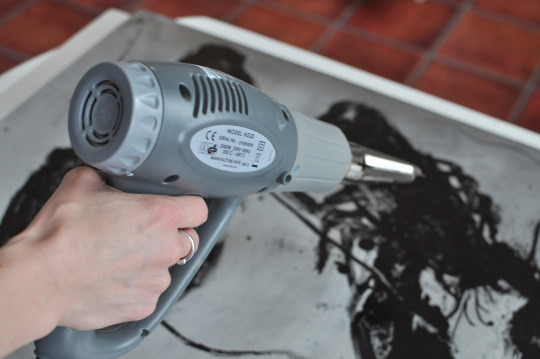
3
Once happy with the results, a heat gun is applied to bond the image to the plate and will become glossy when fixed. At this point there is still the opportunity to add to the image if desired, but be sure to heat the plate again if so.

4
A solution of non-paintable silicone and white spirit is mixed to the consistency of runny honey and is spread onto the plate using a tissue, the aim is to cover the whole plate creating a thin film of silicone. Once you are happy that the plate has been evenly covered, buff the surface using a tissue wrapped in a firm sponge. The plate should be left overnight to cure in a well ventilated room. It is important when working with solvents and chemicals to keep the room well ventilated and wear gloves and protective eye wear.

5
The plate is now ready to be washed out using a tissue and acetone, it is important to keep the tissue well soiled as any abrasive material may affect the delicate surface of the plate. Allow the acetone to do all the work. A ghost image will appear and won’t be fully visible until the plate is inked up.
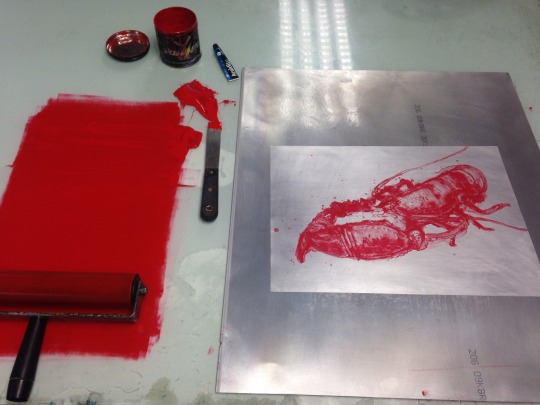
6
Use a rubber based ink such as Van Son Holland. Drag and scrape the ink to create a bead at the top of your workstation unit. A sub-plate is placed under the printing plate which has been coated with silicone to reject the ink from the brayer (roller) when it goes over the edge of the plate.
Once you have inked up the brayer onto your glass plate, roll your brayer onto a corner of the silicone plate to test if it rejects the ink. If it does reject the ink then you are ready to ink up the plate.
It is a good idea to change direction of the brayer to achieve maximum coverage of the image, using a snapping action with the brayer to clean off any unwanted ink on the plate.
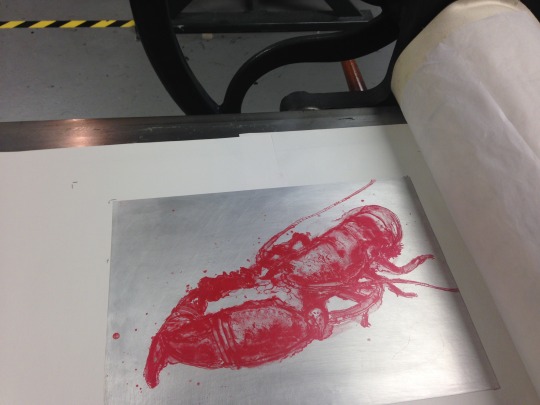
7
With the plate inked, we are ready to print. Smooth paper will produce the best results with this method, such as Zerkal and Fabriano 5. It is always a good idea to make a couple of test prints onto newsprint first to gauge how much ink and pressure you should apply.
The application of waterless lithography has allowed me to retain an expressive painterly feel in my work. I would recommend it to anyone wishing to develop their printmaking skills.
#waterlesslithography#printmaking#dcadundee#Artist#lithographymethod#lightography#art#printingtechniques
2 notes
·
View notes
Link

1 note
·
View note
Photo
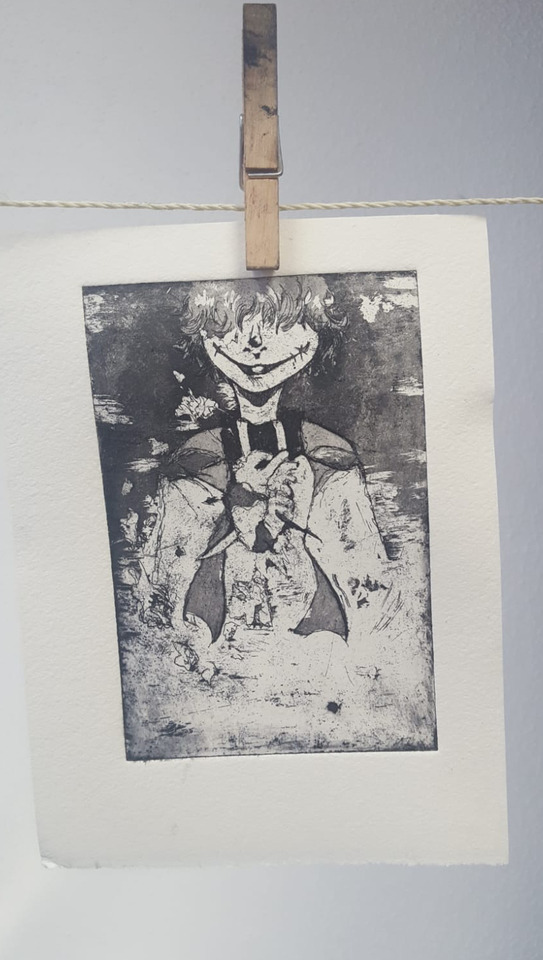
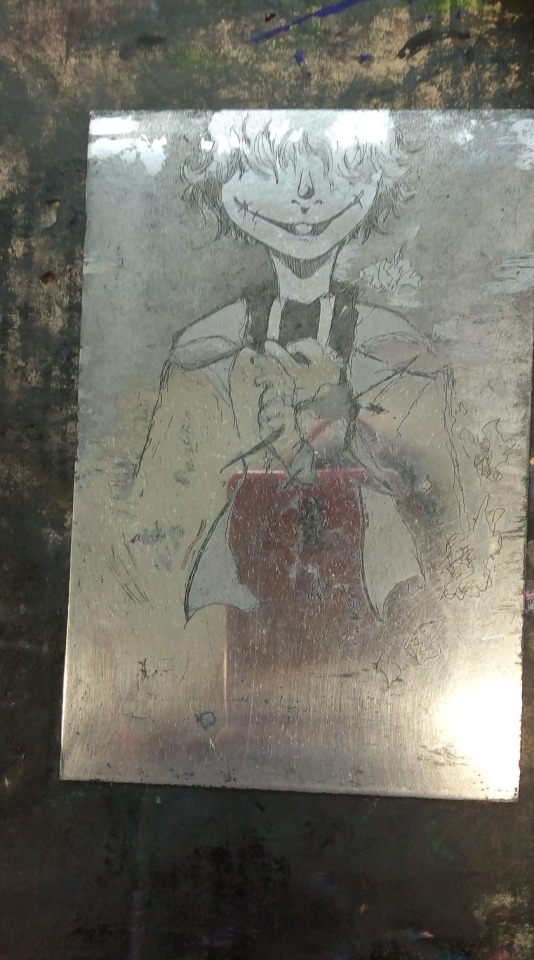
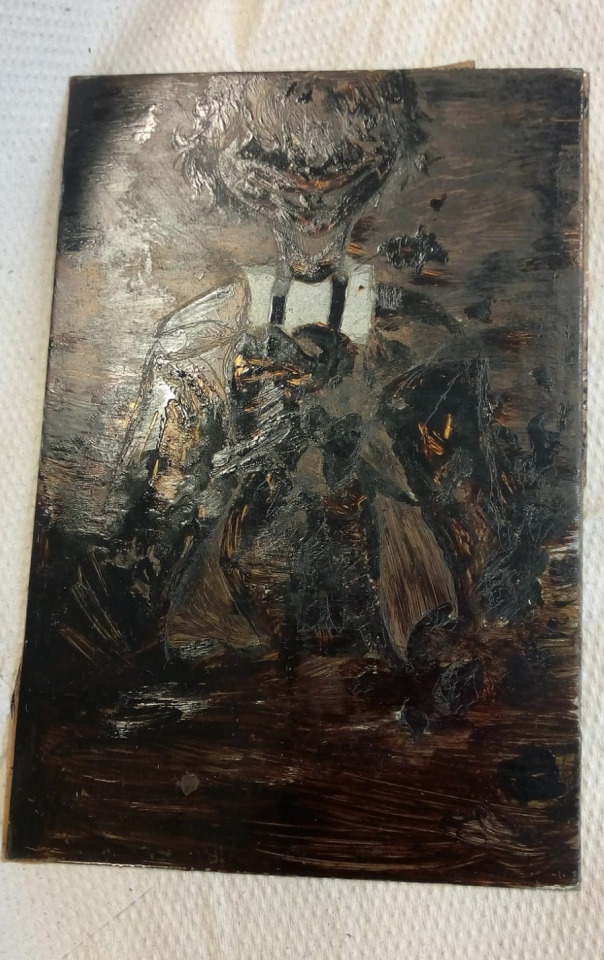
2 notes
·
View notes